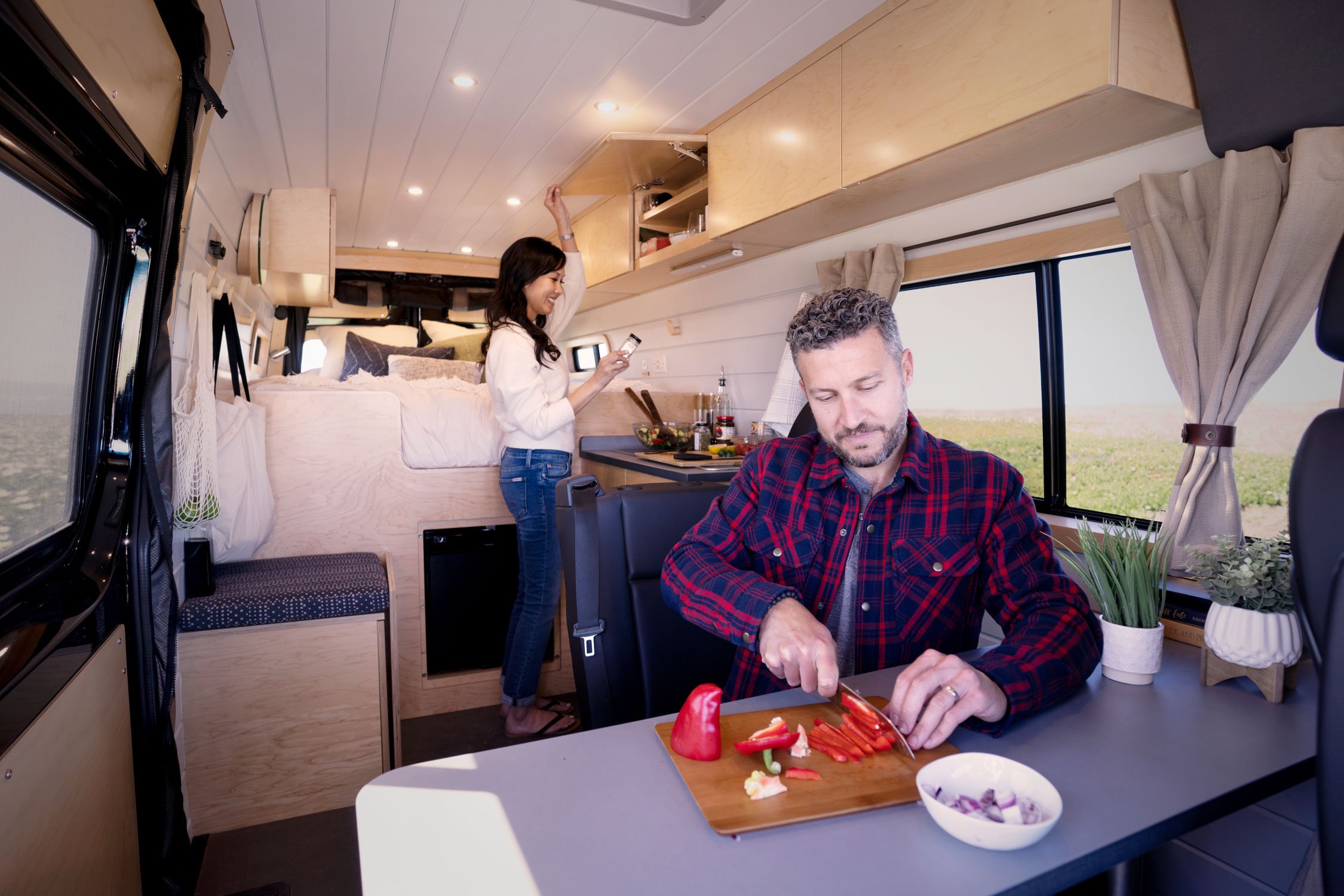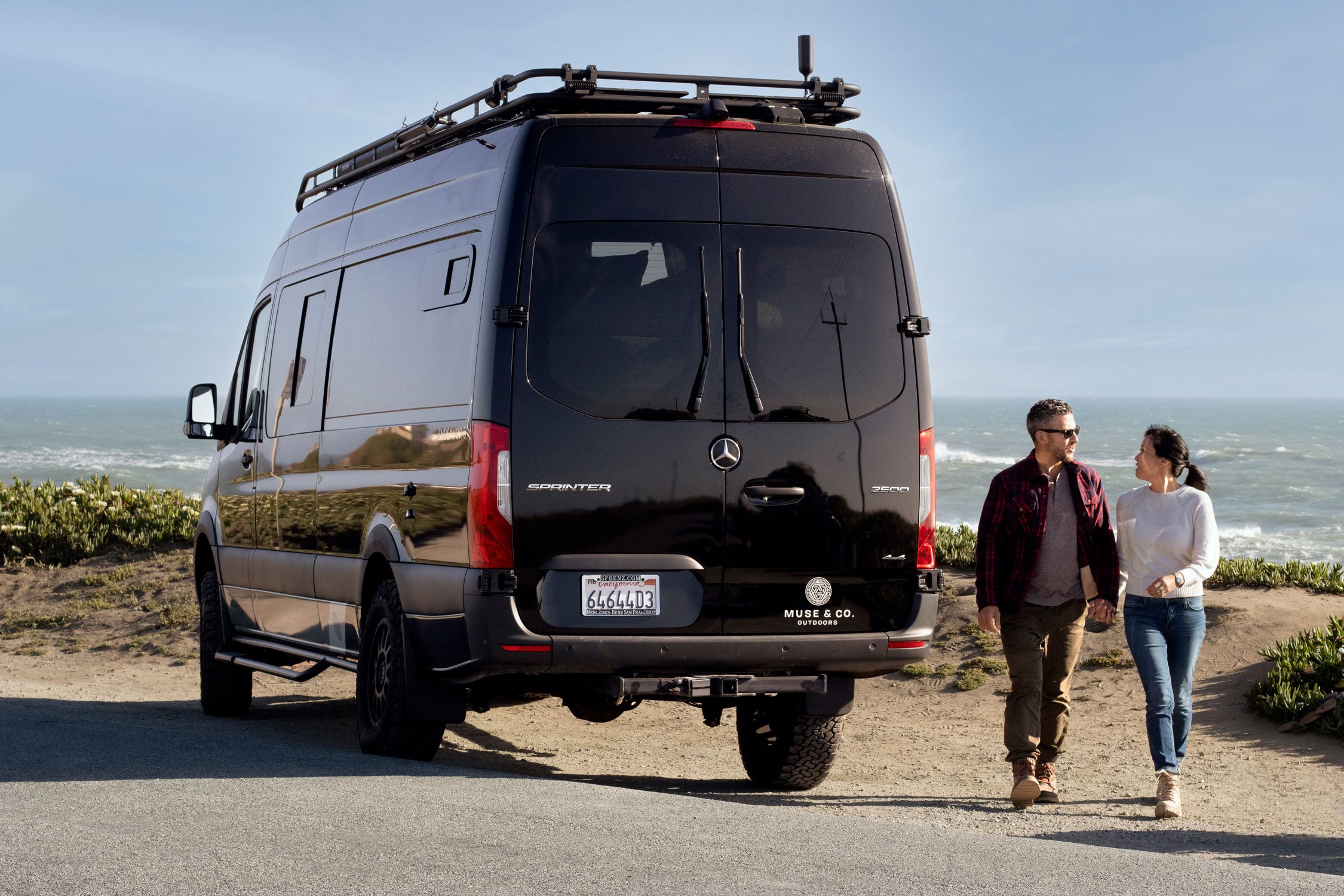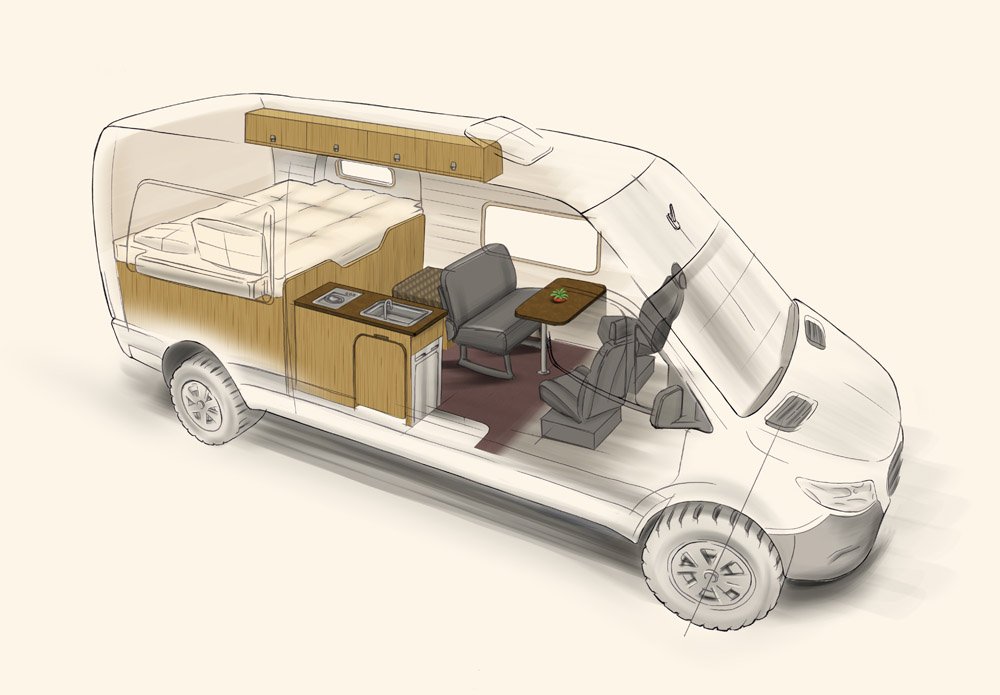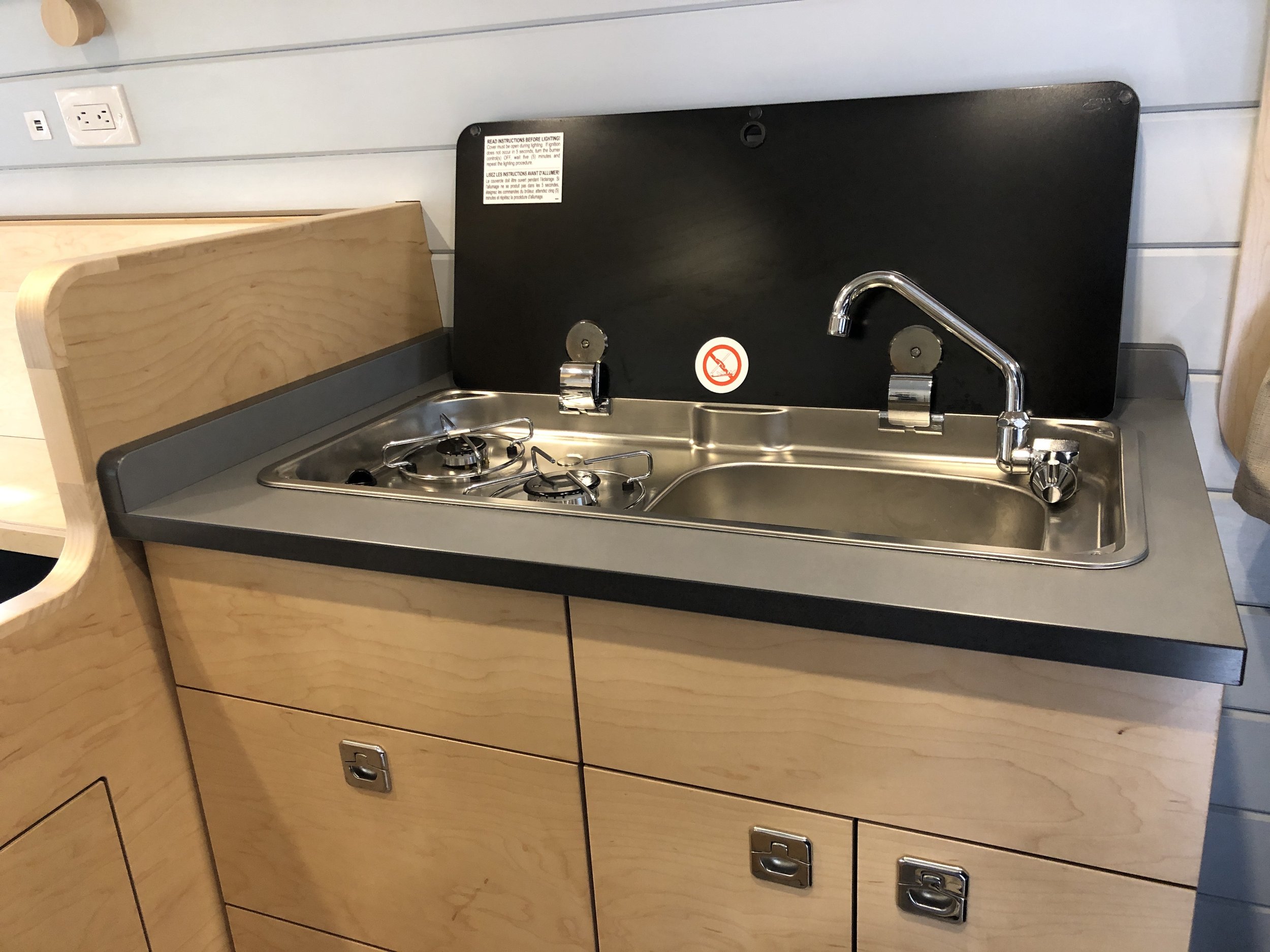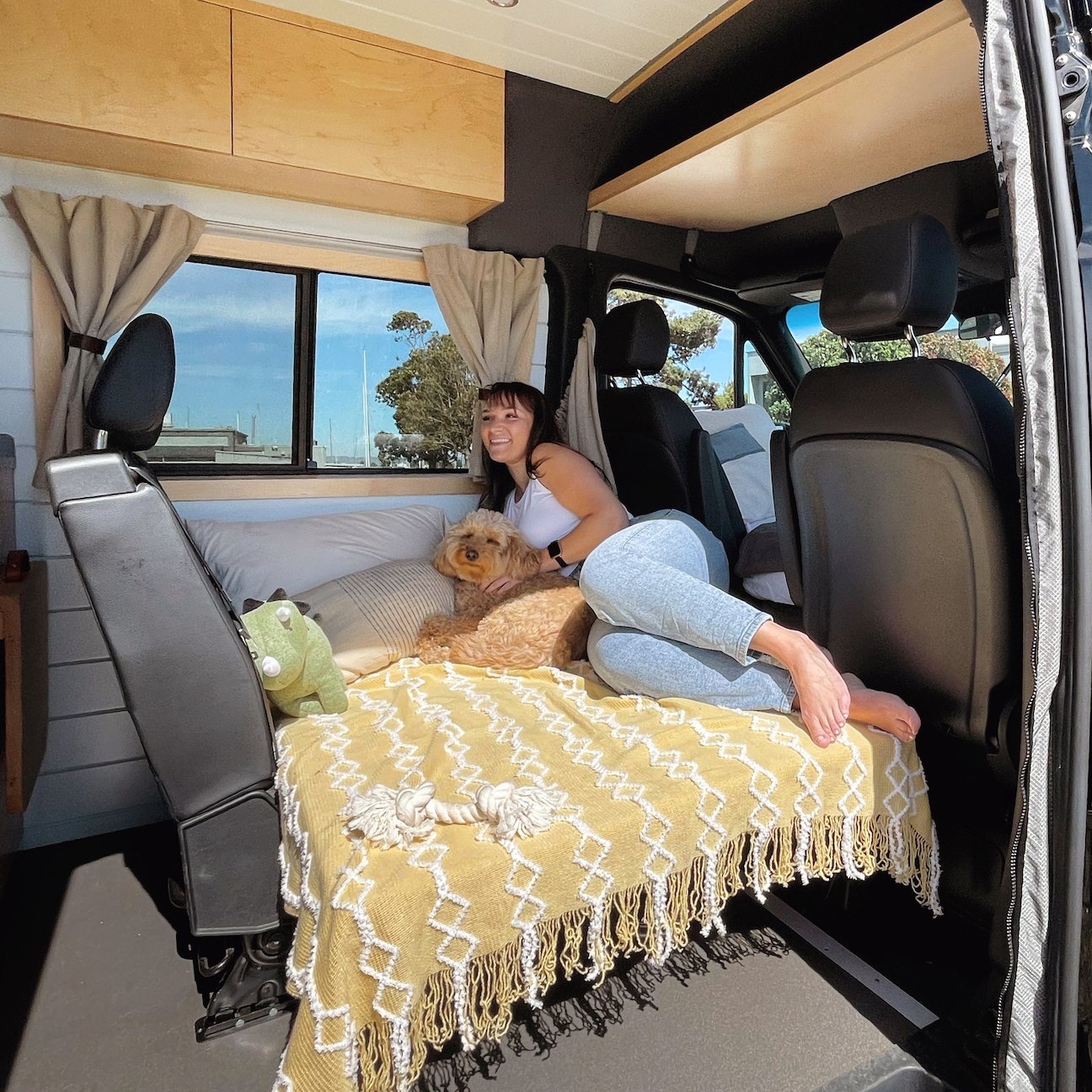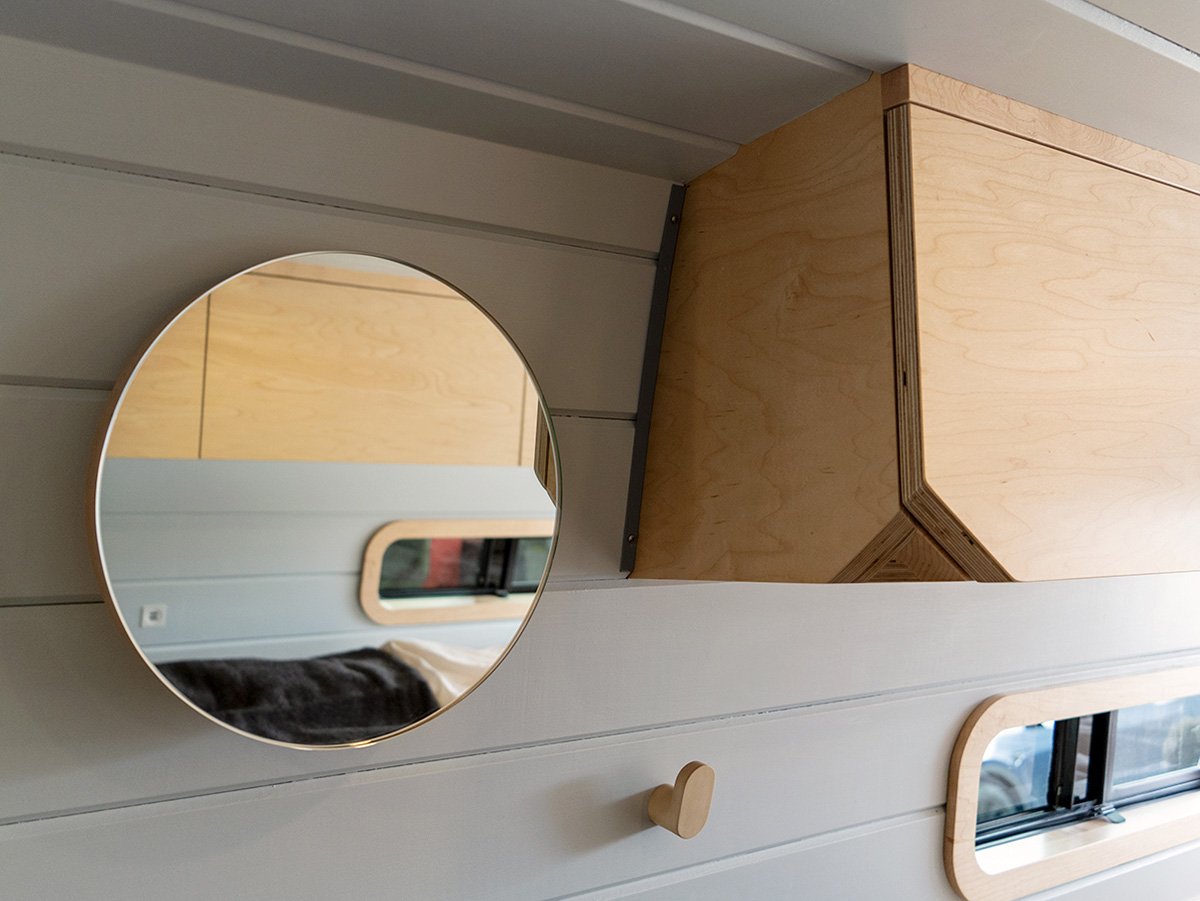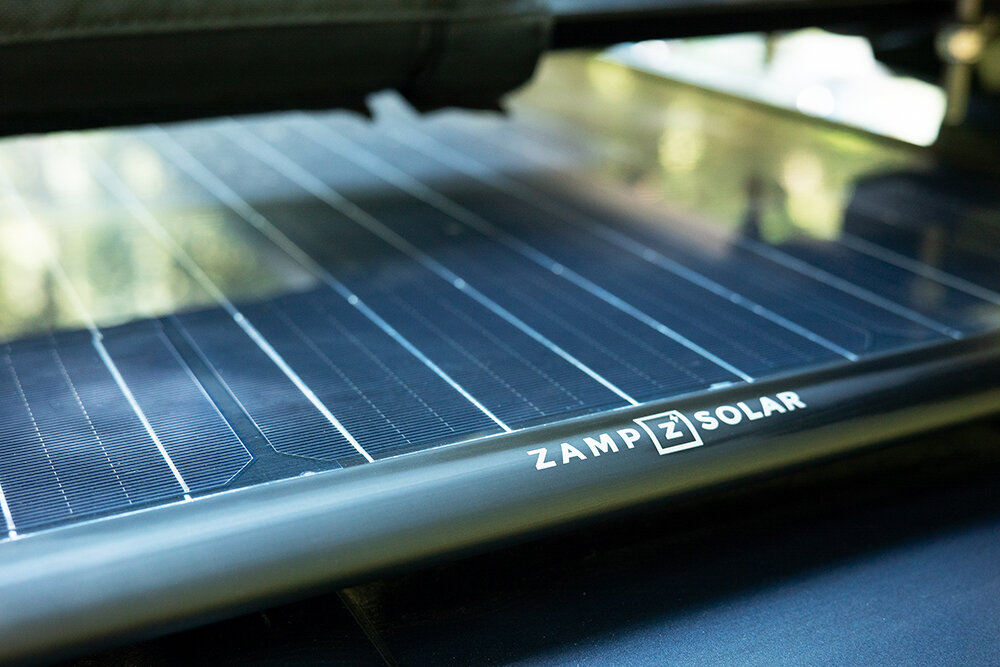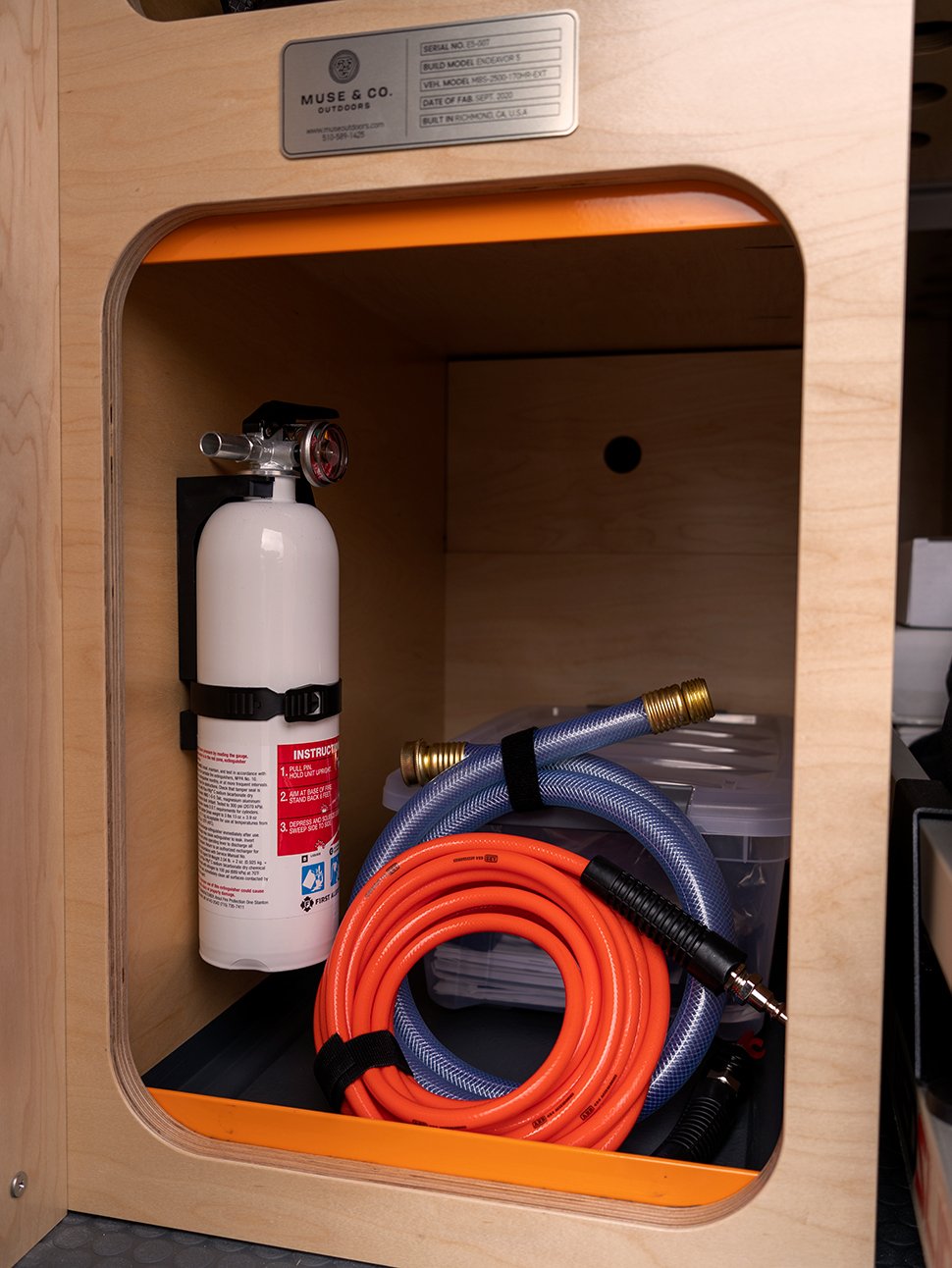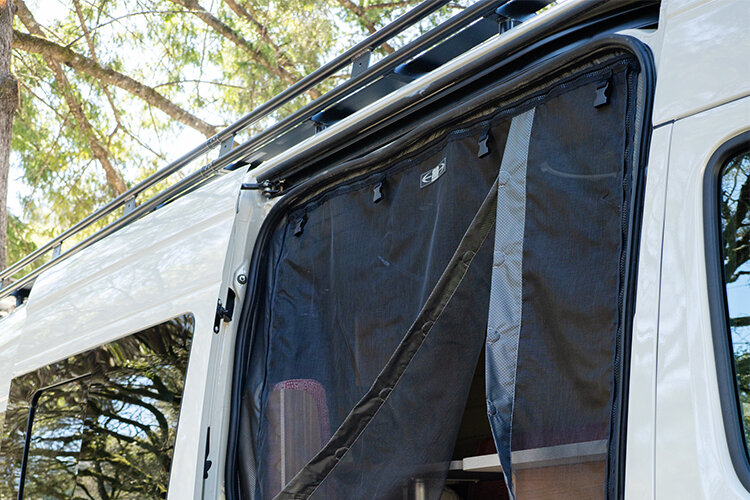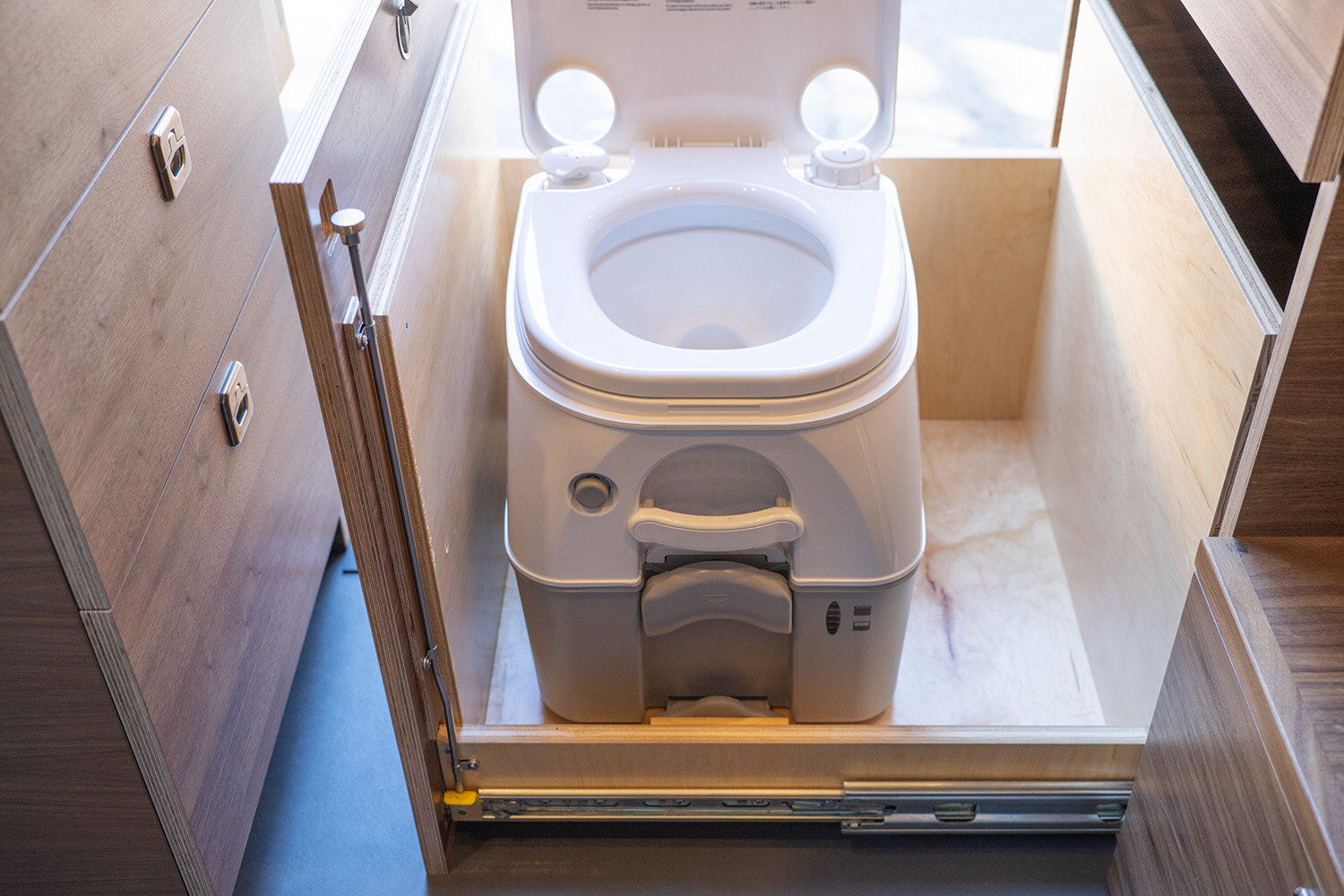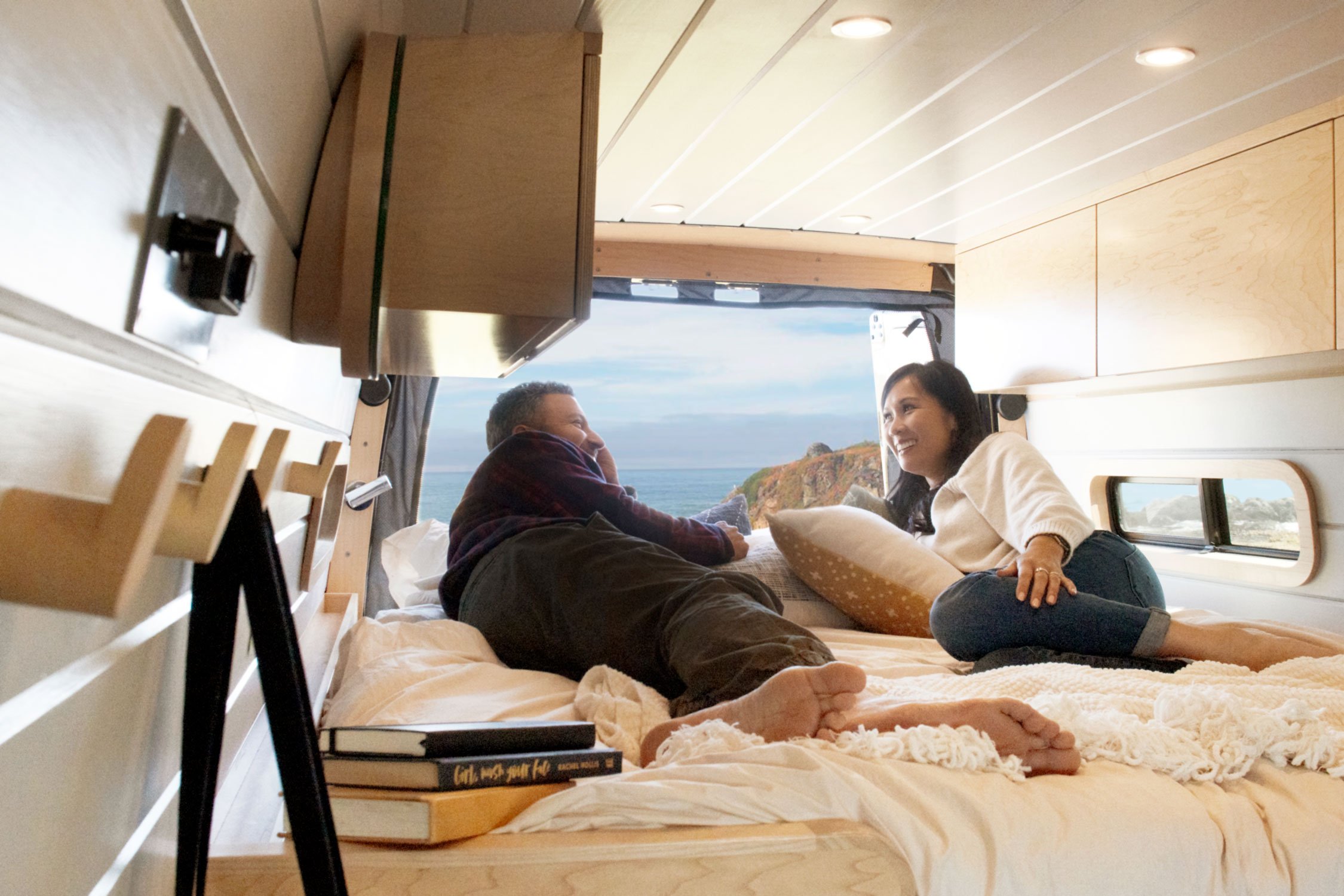
Our Models
We offer three van conversion configurations: a two-passenger van and a three, four or five-passenger van, both built on the proven 170 wheelbase Mercedes Benz Sprinter platform. Our third option is a two or four-passenger van built on the 144 wheelbase. Our team of designers and craftspeople, the talent behind breathtaking immersive spaces at Google, Facebook and beyond, are bringing intuitive design and flawless functionality to the Sprinter van experience. All of our vans are built using sustainable and healthy materials that are better for the environment and good for you. We’ve spent countless hours considering the materials, components, and layouts of our models. The result? A high-quality camper van that functions flawlessly and feels like home—all you have to decide is where you’ll take it.
Venture
Venture is a two-passenger camper van built on the 170 wheelbase, designed to elevate your outdoor adventures. Solo excursions and romantic getaways are a breeze in this van, which lets you travel anywhere without sacrificing comfort.
Endeavor
Endeavor is a three, four or five-passenger camper van built on the 170 wheelbase that makes it simple to get your whole crew outdoors. Cook dinner while the kids play outside, then enjoy game night around the table before you transform it into the kid’s bed. Family adventures have never been this easy.
Explorer
Explorer is a two or four-passenger camper van built on the 144 wheelbase, created especially for campers who demand a luxurious, feature-laden van in a more maneuverable size.

Adventure Comes Standard
Top-of-the-line components are an essential part of every great van build. We’ve thoughtfully incorporated the best materials and components into our designs, so that each van that leaves our shop is ready for your outdoor life. Every Muse & Co. Outdoors van includes the following features:

You’ve Got Options
Whatever calls you outside, we’ve got the goods to make your dream #vanlife a reality. Deck out your van with extra equipment that fits your needs by choosing from our enhancements, optional packages and accessory bundles. Then, make it your own with your choice of color palette. When you’re ready to finalize your design, reach out and we’ll make sure everything is just right.
